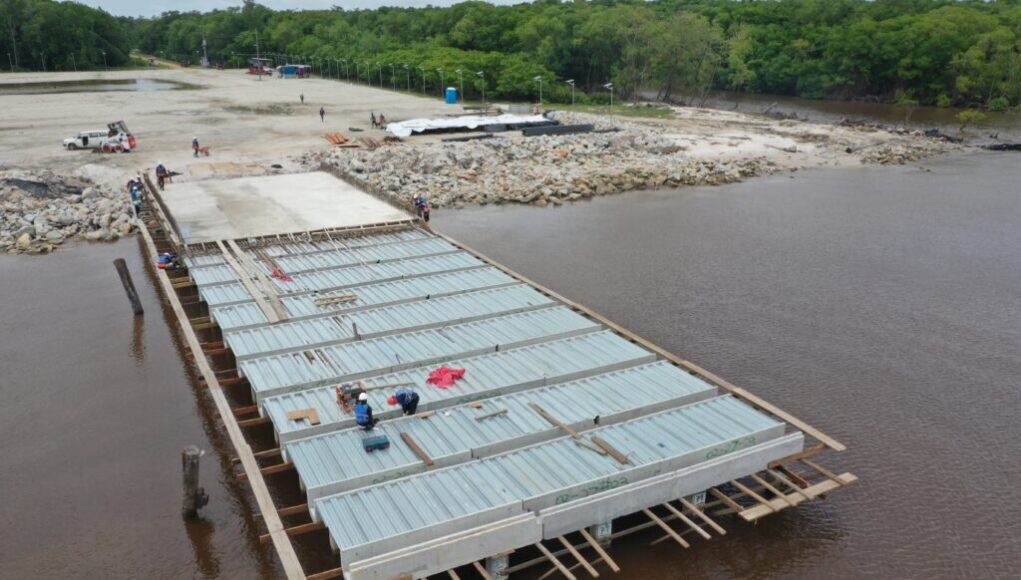Vice President Dr. Bharrat Jagdeo has decisively addressed the confusion surrounding the government’s aspirations for a deepwater port to facilitate trade with Brazil and the ongoing construction of a similar venture by CGX Energy Inc.
During his recent press conference he emphasized that CGX’s facility is fundamentally distinct from the deepwater port envisioned by the government, both in purpose and capacity.
Dr. Jagdeo was questioned about the protracted delays associated with the completion of the Berbice port, which CGX Energy Inc. has been working on. The Vice President responded by delineating a crucial point: “First of all, it’s not a deepwater port, because it’s built on the river itself. The draft there would not allow you to have big vessels go in.” He clarified that CGX’s port was originally conceived to support their own operations, with plans scaled back from an initial 55-acre site to a 25-acre facility.
Reporter inquiries had probed deeper into the potential of the CGX port to serve as a point for Brazilian exports, reflecting a widespread misconception about the project’s capabilities and intentions. Dr. Jagdeo refuted this notion unequivocally, stating, “No, nothing of that sort. If you look at that port, it’s 25 acres, and it’s in relatively shallow waters because it’s on the river itself.” He reiterated that the CGX port lacks the depth and scale required to accommodate significant maritime trade and stressed that it has no role in the broader scheme of the government’s deepwater port ambitions, particularly in connection with Brazil.
He made it very clear that while CGX’s port is tailored for specific commercial activities linked to their oil operations, the government’s vision is far more ambitious. Dr. Jagdeo underscored that the governmental project aims to establish a major deepwater port with robust connections to Brazil, incorporating road and rail links and potentially even transmission mains extending into northern Brazil.
Dr. Jagdeo also touched on the current status of CGX’s commitment to their port project, noting their past promises and the need for a reassessment. “They made a commitment several years ago, maybe two years ago, two or three years ago, that they will complete this project. They have been unable to complete it,” he said, signaling the government’s intention to seek further clarification and guidance on the matter from the cabinet.
The Vice President’s comments suggest that the future of the CGX facility may hinge on the company’s ability to advance their commercial interests and fulfill their obligations.
Moreover, in light of these clarifications, the government’s strategy appears focused on ensuring that the deepwater port project proceeds independently of CGX’s delayed facility, aligning with broader goals of economic integration and enhanced trade connectivity with Brazil. Jagdeo’s detailed differentiation between the two projects not only dispels misconceptions but also reaffirms the government’s dedication to advancing Guyana’s role as a key player in regional trade and development.













